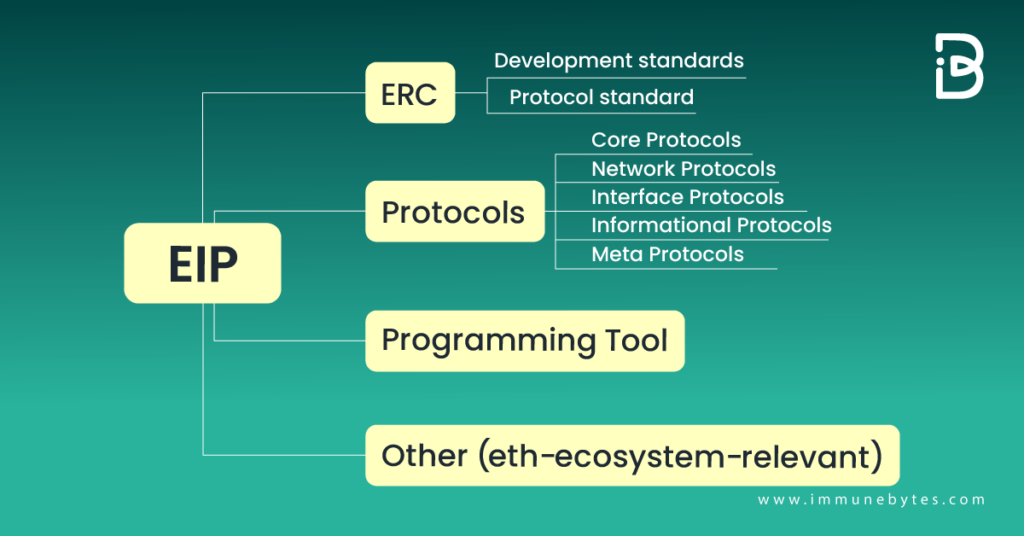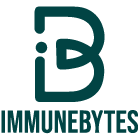Onboarding users into the realm of crypto has always been a great challenge. There is a wide array of complex concepts to decipher, such as smart contracts, the working of intricate wallets, understanding the difference between centralized and decentralized entities, and more.
In 2023, Ethereum plans to make the process effortless for non-developers with the help of EIP-4337 and ERC-4337. These have contributed immensely to enhancing the experience of users to adopt web3. Both center around one common goal every web3 enthusiast should have Smart Accounts.
This blog will delve deeper into technicals and jargon connected with account abstraction, explaining each as clearly as possible, together with a real-world example. ImmuneBytes is the perfect destination to get the answers to all the questions that you have in mind.
Let us get started.
Demystifying EIP-4337 And ERC-4337
Table of Contents
People often use EIP-4337 AND ERC-4337 interchangeably, but there is a difference between the two.
- Whenever, there is any technical change that is proposed to the Ethereum ecosystem, it begins as an Ethereum Improvement Proposal (EIP).
- As soon as it is accepted and authorized by the on-chain governance model, it then becomes an Ethereum Request for Comment (ERC).

As you can see in the above image, the change that started as an EIP-4337 has now changed into ERC-4337. Interestingly, ERC is broader than the EIP space. It covers protocols and developing the standards.
What is ERC-4337?
It is an Ethereum standard that works to supercharge user accounts to smart accounts. Or, in a more technical sense, it is a means of account abstraction.
Imagine you own a traditional pocket wallet. In that wallet, there are different sections: one is for cash, another is for the credit card, one for coupons, and so on. When you wish to make a cash transaction, you only wish to reach out to the cash section. Scavenging through the other sections won’t help.
Now think of this wallet as a smart wallet. This wallet has only one section with a payment mechanism that can easily be accepted as a coupon, credit card, or cash. It becomes what you want it to become. If you want cash, you get cash; if you want a card, you get a card, and so on.
Why Abstraction?
- It means ideation. With EIP-4337, Ethereum has plans to introduce new ideas to the user accounts.
- It can also mean extraction or removal, allowing users to escape the legacy handling of user accounts like MetaMask.
- Putting it simply, with the help of ERC-4337, the Ethereum ecosystem plans to bring smart contract functionality to wallets.
- In other words, it does its part to make wallets synonymous with smart accounts.
- This helps perform multiple tasks, initiate and sustain crypto transactions, and handle multi-factor authentication, all via code.
Following is a list of things that you can abstract.
Account Abstraction: History
The utility of ERC-4337 can be depicted in the form of a history of proposals related to account abstraction. These are the attempts.
- EIP-86: It was proposed in 2016-17, and the main focus behind this was to empower smart contracts, resulting in initiating and approving transactions. Owners need to sign off transactions in the current generation of wallets.
- EIP-2938: This was proposed in the year 2020, and the primary aim was to create a new type of top-level account that uses address-specific creation and implementation of smart contracts.
- EIP-3074: This proposal also emerged in 2020. This allowed better execution of smart contracts. This proposal aimed at delivering self-executing smart contracts.
- EIP-196: This proposal also aimed at making smart contracts secure and work more efficiently. All of these account abstraction-focused suggestions, nevertheless, were rejected. This is because they demanded modifications to Ethereum’s consensus layer.
Imagine if the consensus layer is the backend, and the execution layer is the front end of the Ethereum ecosystem. In 2021, ERC-4337 was proposed and authorized in 2023. The main reason behind this was that it ensured zero consensus-layer protocol changes.
The Idea Behind Account Abstraction
Now that we know little about ERC-4337, it is the perfect time to trace the motivations behind people adopting the audited version onto the Ethereum mainnet.
- Most of the wallets that exist on Ethereum are Externally Owned Accounts (EOA) powered by third parties.
- These include MetaMask, imToken, etc.
- There is no question about the popularity of these wallets. However, the entire responsibility of managing the user account is on the user’s private key.
- You can bid adieu to your account and its funds if you lose the private key.
- ERC-4337 plans to change this by making accounts synonymous with powerful smart contracts.
- Earlier centralized relays handled transaction fee payment, but now, with the help of ERC-4337 and account abstraction, even this has become decentralized.
Reasons Why ERC-4337 Came Into Existence
An aspiring Web3 user might want to use the term ‘smart contracts.? ERC-4337 primarily aims at making the experience of users akin to a Bank as well as simplifying the process of account handling.
These are some of the reasons why ERC-4337 came into existence.
- To make users free from relying on seed phrases.
- Smart contract wallets will minimize the chances of human errors.
- Standard user onboarding via mobile devices.
- Making networks less prone to threats and attacks with schemes like Quantum resistance, BLS, and more.
- It is easier to implement the changes on other EVM-compatible chains.
How does ERC-4377 Work?
Here is how ERC-4377 works.
- Stage 1:
In the first stage, the user intent for a job is sent out as UserOperation. It is an entity that completely corresponds to the users and applications that wish to ride the account abstraction.
- Stage 2:
The next stage involves bundling the UserOperation bits into an alternate mempool.
Benefits Of ERC-4377 Powered Smart Accounts
There are several user-specific benefits that ERC-4377 provides. These include:
- They contribute to making mobile hardware as efficient as a hardware wallet.
- This innovation amalgamates all the aspects of Account abstraction.
- The relay system that is used in this case is completely decentralized, resulting in eliminating the interference of any third party and making it even more secure.
Final Thoughts:
The ERC-4337 is huge. For a long time now, account abstraction has been envisioned. However, the actual OpenZepplin audited version of the facilitator smart contract is what has made ERC-4337 a true win for the entire ecosystem!
With the help of ERC-4337, it has become much easier to trade in NFTs, build new smart contract wallets, get crypto newsletter memberships, and play web3 games. And all of these things you can do without even being a technical guru. Therefore, it won’t be an exaggeration to say that in the near future, things will get much easier and more accessible for a normal user.
If there is something else that you would like us to help you understand, get in touch with us. ImmuneBytes is a pioneering smart contract auditing company that leaves no stone unturned when it comes to providing robust solutions to all the queries of our clients.

